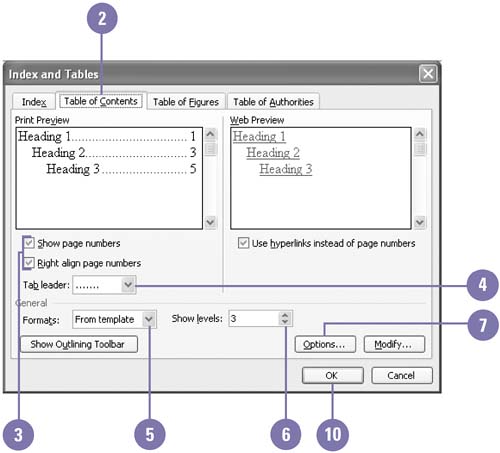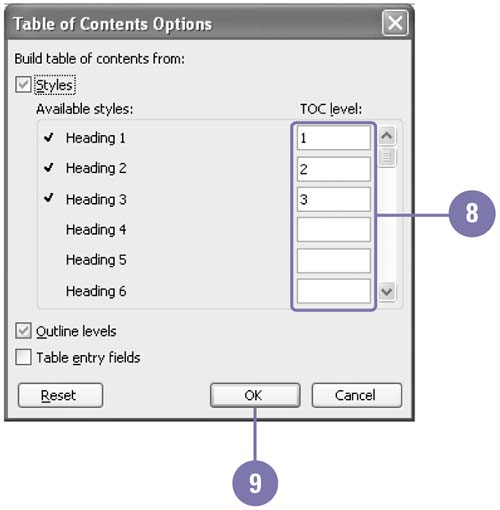| A table of contents provides an outline of main topics and page locations. Word builds a table of contents based on the styles in a document that you choose. By default, Heading 1 is the first-level entry, Heading 2 the second level, and so on. In a printed table of contents, a leader , a line whose style you select, connects an entry to its page number. In Web documents, entries become hyperlinks . Hide nonprinting characters before creating a table of contents so text doesn't shift to other pages as you print. Insert a Table of Contents -
 | Click the Insert menu, point to Reference, and then click Index And Tables. | -
 | Click the Table Of Contents tab. | -
 | Select the Show Page Numbers and the Right Align Page Numbers check boxes. | -
 | Click the Tab Leader list arrow, and then select a leader style. | -
 | Click the Formats list arrow, and then select a table of contents style. | -
 | Enter the number of heading levels you want. | -
 | Click Options. | -
 | If necessary, delete any numbers, and then type 1 next to the first-level style, 2 next to the second-level style, and so on. | -
 | Click OK. | -
 | Click OK. |   Did You Know? You can create an index of figures and legal notations . Use the Index and Tables dialog box to create an index, table of figures, or table of authorities, which tracks legal notations. |  |

